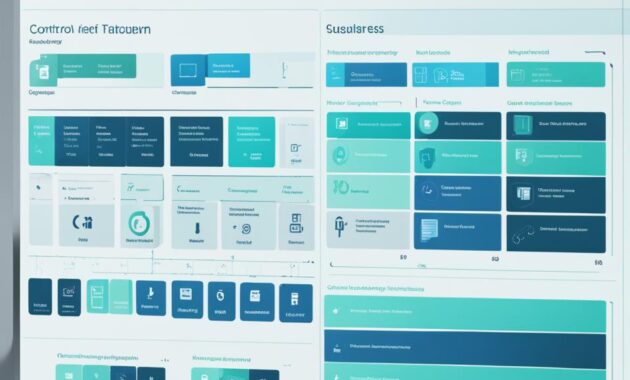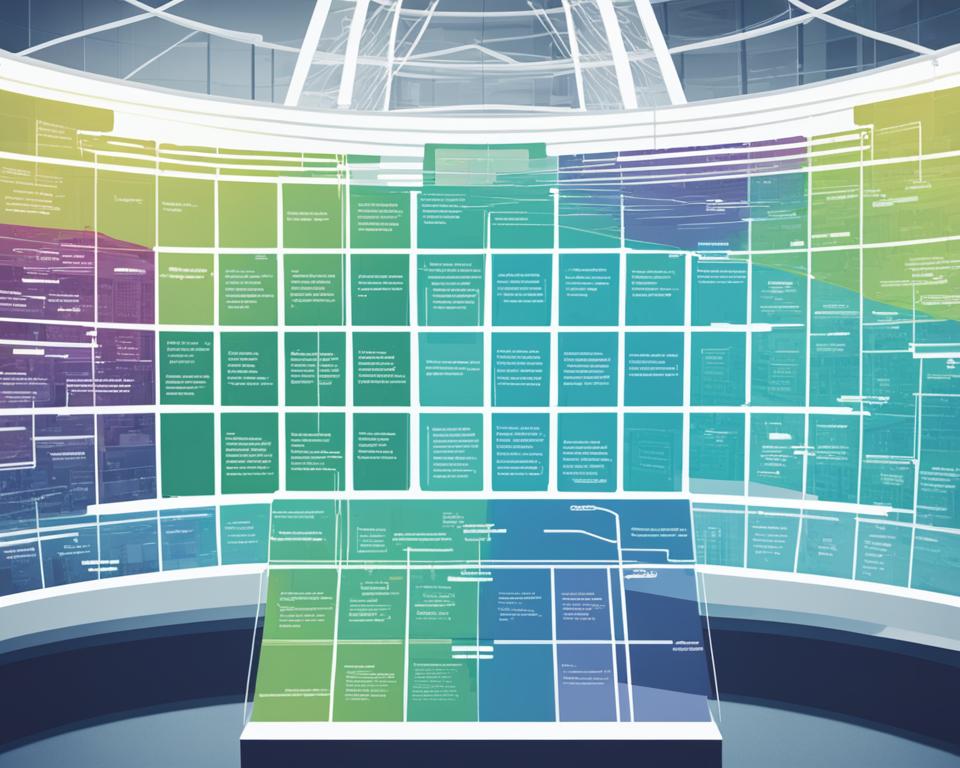In today’s dynamic business landscape, the need for a comprehensive and integrated management solution has become increasingly crucial. Enter the enterprise resource management (ERM) system – a robust software platform designed to streamline business operations, enhance cross-functional collaboration, and drive organizational efficiency. By harnessing the power of ERP software, companies can unlock a new era of data-driven decision-making and unlock the full potential of their resources.
At the core of an ERM system lies the ability to integrate and automate a wide range of business processes, from finance and accounting to supply chain management and human resources. This enterprise-wide information system serves as the backbone of an organization, providing real-time data and insights that empower leaders to make informed decisions and optimize their operations.
Key Takeaways
- Enterprise resource management systems integrate and automate cross-functional business processes
- ERP software provides real-time data and analytics for informed decision-making
- ERM systems drive organizational efficiency and unlock the full potential of resources
- Integrated management solutions streamline operations and enhance collaboration
- Corporate process automation and integrated data management are at the core of ERM systems
Unleashing the Power of Enterprise Resource Management Systems
The modern business landscape demands seamless integration and optimization of cross-functional operations. Enterprise resource management (ERM) systems emerge as the cornerstone of this transformation, enabling organizations to streamline their processes and make informed decisions based on real-time data. By harnessing the power of ERP software, companies can unlock new levels of efficiency and agility.
Streamlining Operations with ERP Software
ERP software serves as an integrated management solution, consolidating various business functions under a single platform. From financial management and human resources to supply chain logistics and customer relationship management, these enterprise resource planning systems integrate all the critical components of an organization. This holistic approach ensures seamless data flow, eliminates information silos, and empowers cross-functional collaboration, ultimately driving operational excellence.
Real-time Data for Informed Decision-Making
At the heart of an effective ERM system lies the capacity to provide real-time data and analytics. By integrating organizational resource planning, ERP software offers a comprehensive view of an enterprise’s performance, allowing managers to make data-driven decisions. This access to accurate, up-to-date information enables organizations to respond swiftly to market changes, optimize resource allocation, and execute strategic initiatives with confidence.
| Key Benefits of ERP Software | Description |
|---|---|
| Streamlined Operations | Integrates all business functions into a single platform, enhancing cross-functional collaboration and efficiency. |
| Real-time Data Access | Provides comprehensive, real-time insights into an organization’s performance, enabling informed decision-making. |
| Improved Productivity | Automates and standardizes business processes, freeing up resources for strategic initiatives. |
| Enhanced Visibility | Offers a holistic view of an enterprise’s operations, facilitating better resource planning and optimization. |
Integrating Business Processes with an enterprise resource management system
Implementing an enterprise resource management system (ERP) is a transformative step for businesses seeking to optimize their operations. Beyond just automating administrative tasks, an ERP system can seamlessly integrate with a company’s existing business processes, driving efficiency and enhancing cross-functional collaboration.
One of the key benefits of integrating an ERP system is the ability to streamline workflows across the organization. By aligning disparate departments and functions under a single integrated management solution, companies can eliminate silos, improve data sharing, and promote a more cohesive corporate process automation approach.
| Benefits of ERP Integration | Key Features |
|---|---|
| Improved workflow efficiency | Automated data entry and processing |
| Enhanced data management | Centralized repository for enterprise-wide information system |
| Leveraging cross-functional applications | Seamless communication and collaboration between departments |
By integrating an ERP system with their existing business operations, organizations can unlock a wealth of data-driven insights, enabling more informed decision-making and a heightened ability to adapt to changing market conditions. This comprehensive enterprise resource management system approach empowers businesses to streamline processes, enhance productivity, and ultimately achieve greater organizational success.

Maximizing Efficiency with Business Intelligence Tools
Leveraging the power of an enterprise resource management system goes beyond streamlining operations. By seamlessly integrating business intelligence tools into the mix, organizations can unlock a new level of data-driven decision-making and operational optimization.
Leveraging Operational Data Management
At the heart of an effective enterprise resource management system lies the ability to manage and analyze vast troves of operational data. Business intelligence tools empower teams to uncover valuable insights from this data, transforming raw information into actionable strategies. From inventory tracking to sales trends, these tools provide a 360-degree view of the organization’s performance, empowering leaders to make informed decisions.
Cross-functional Applications for Organizational Success
The true power of an enterprise resource management system coupled with business intelligence tools lies in its cross-functional applications. By aligning various departments and streamlining information flow, these integrated business management suite solutions enable organizations to achieve a new level of operational efficiency. From finance to human resources, sales to logistics, the data-driven insights gleaned from these tools can drive organizational success and competitive advantage.
| Key Benefits | Enterprise Resource Management System | Business Intelligence Tools |
|---|---|---|
| Data Integration | ✓ | ✓ |
| Operational Efficiency | ✓ | ✓ |
| Cross-functional Alignment | ✓ | ✓ |
| Informed Decision-making | ✓ | ✓ |
Conclusion
As we’ve explored, an enterprise resource management system can be a transformative tool for businesses of all sizes. By streamlining operations, providing real-time data for informed decision-making, and integrating business processes, an ERP solution can help organizations achieve new levels of efficiency and success.
Throughout this article, we’ve highlighted the key benefits of implementing an ERP system, from improved data management and cross-functional collaboration to enhanced business intelligence and operational insights. These capabilities empower businesses to make data-driven decisions, optimize workflows, and ultimately drive sustainable growth.
Ultimately, the implementation of an enterprise resource management system represents a strategic investment in a company’s future. By embracing the power of integrated systems and comprehensive data analysis, businesses can position themselves for long-term success in an increasingly competitive landscape. The journey towards operational excellence starts with the adoption of a robust ERP solution.

